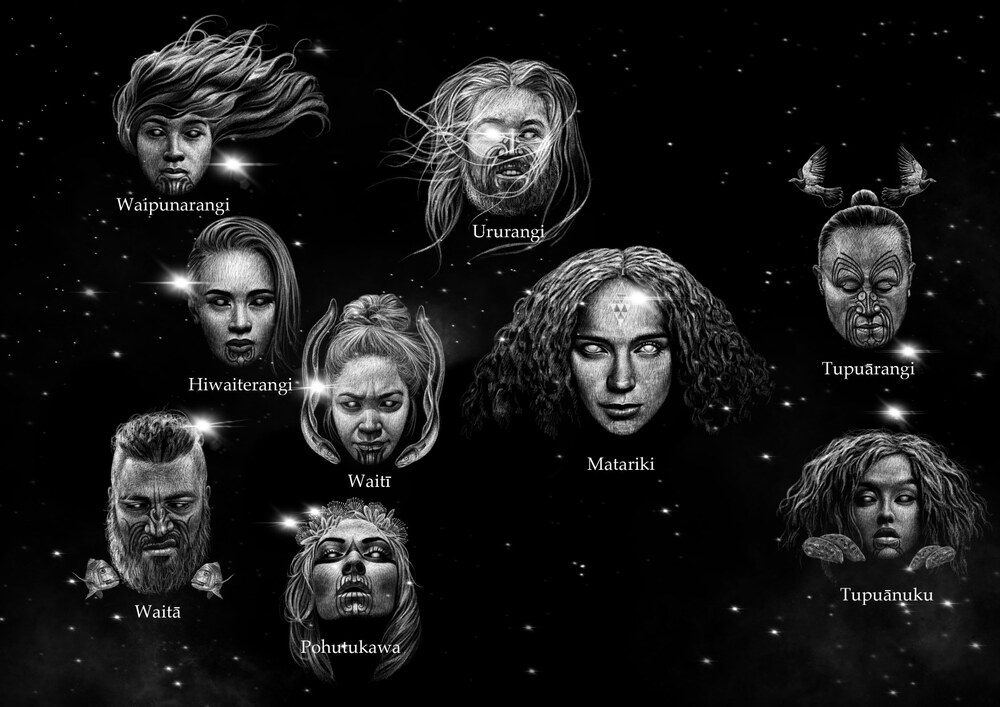Ngāti Manuhiri Settlement Trust share key information and traditional knowledge around Matariki
Ngāti Manuhiri Settlement Trust
13 July 2023, 10:37 PM

What is Matariki?
Matariki is a time for remembrance, celebrating the present and looking to the future.
Matariki Hunga Nui
Remembrance
Honouring those we have lost since the last rising of Matariki.
Matariki Ahunga Nui
Celebrating the Present
Gathering together to give thanks for what we have.
Matariki Manako Nui
Looking to the Future
Looking forward to the promise of a new year.
Matariki is a small cluster of stars also known as the Pleiades. In Aotearoa New Zealand it comes into view low on the north-eastern horizon, in the tail of the Milky Way, just before midwinter. This heralds the Māori New Year and the changing of the seasons.
The appearance of Matariki brings a time of remembrance, joy and peace. It’s a time for communities to come together and celebrate.
Iwi celebrate Matariki at different times, some when the cluster is first seen in the dawn sky, others after the full moon rises or at the beginning of the next new moon.
For some iwi, the star cluster includes seven stars, while for others it has nine.
For all iwi, the importance of Matariki is expressed through proverbs and songs linking it with the bright star Whanui (Vega).
Ka puta Matariki. Ka rere Whanui. Ko te tohu o te tau e!
Matariki reappears. Whanui starts it flight. Begin the sign of the (new) year!
What does Matariki mean for Māori?
Traditionally, Matariki was seen as a time to honour the dead, show respect to the land and cultivate the ground for growing crops in the coming year. Early Māori relied on Matariki to predict the success of the next harvest - the brighter the star cluster seemed, the better the growing season was predicted to be.
However, today Matariki has been revived as a celebration of people, culture, language, spirituality and history. It is a time for whanau and friends to come together and reflect on the past year and look towards the year ahead.
Translated, Matariki means the ‘eyes of god’ or ‘little eyes’. According to one Māori legend, when Ranginui, the sky father, and Papatūānuku the earth mother were separated by their children the god of the winds,Tāwhirimātea, became angry and tore out his eyes and threw them into the heavens.
One story goes that Matariki (the mother) and her six daughters journey across the sky each year to visit their great grandmother, Papatūānuku, to share knowledge and learn new skills to prepare for the year to come.
Nga Whetū o Matariki

Each star holds a certain significance over our wellbeing and environment as seen from the Maori view of the world.
- Matariki is the star that signifies reflection, hope or connection to the environment, our health and wellbeing, and the gathering of people.
- Pōhutukawa is the star connected to those that have passed on.
- Tupu-ā-rangi is connected with everything that grows up in the trees: fruits, berries and birds
- Tupu-ā-nuku is the star connected with everything that grows within the soil to be harvested or gathered for food.
- Waitī is connected with all freshwater bodies and the food sources that are sustained by those waters.
- Waitā is associated with the ocean and food sources within it.
- Waipuna-ā-Rangi is connected with the rain.
- Ururangi is the star connected with the winds.
- Hiwa-i-te-rangi is the star connected with granting our wishes and realising our aspirations for the coming year.
Waiata o Matariki
There are many waiata (songs) that acknowledge and honour Matariki but this song is a beautiful song that encompasses the purpose of Matariki and a Ngāti Manuhiri kaumatua once said that he thinks of all his old people, all of those that shared mātauranga (indigenous knowledge) with him over his time.
This version only acknowledges the 7 stars but there is an updated version that has all 9.
How to spot Matariki
To spot Matariki when its visible, look low on the horizon in the northeast of the sky; it's easier to spot pre-dawn, between 5:30am and 6:30am.
Look for what you probably know as Orion's Belt or the bottom of 'the pot' and follow the three stars across the sky to the left until you find Matariki.
It's a small and tight cluster, not as big and showy as you might be expecting, but once you know what you're looking for you will see it more easily and grow to appreciate its charms.
References:
- Ngāti Manuhiri Settlement Trust
- Professor Rangi Matamua
- Rereata Makiha
COMMUNITY GROUPS


